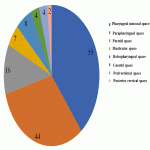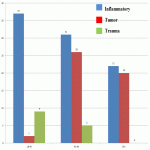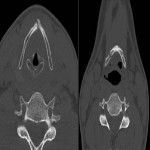Keywords:
Emergency, Head and neck, CT, Computer Applications-Detection, diagnosis, Diagnostic procedure, Inflammation, Neoplasia, Trauma
Authors:
R. Skumbiņš, S. Dzelzite, P. Prieditis, M. Radzina; Riga/LV
DOI:
10.26044/ecr2021/C-12606
Conclusion
1.CT examination of the soft cervical tissue at the emergency early stage is available and fast to determine the type of pathology, prevalence, complications and subsequent planning of treatment tactics, especially in 3 major groups of pathologies – tumors, inflammation and trauma.
2. In the evaluation of soft cervical tissues in patients with clinical suspicion of oncology - contrast-enhanced 3-series CT protocol is advised to assess the extension and vascularization characteristics, in inflammatory and other benign cases non-enhanced CT and 100th enhanced second examination is informative, while reducing the radiation dose for the patient.
3. In order to accurately assess pathological changes in the neck, it is important to determine its localization in the interfascial spaces for treatment planning, but this does not narrow the radiological differential diagnosis. It is recommended to take into account the age of the patient, allowing to narrow the differentials, i.e. tumours were more observed after 45 years, while injuries up to 65 years, but inflammation affects all age groups without significant differences. Irregular shape, heterogeneous, with cystic degeneration or necrosis after contrast administration and slow course - with high probability are associated with oncology, while short history, rapid progression and alterated laboratory and other test results - in the case of inflammation. Particular attention should be paid to blood C reactive protein levels > 125 mg/l, which indicates abscess formation in the throat and parapharyngeal space, while in case of tumour and injury not reaching 50 mg/l.














